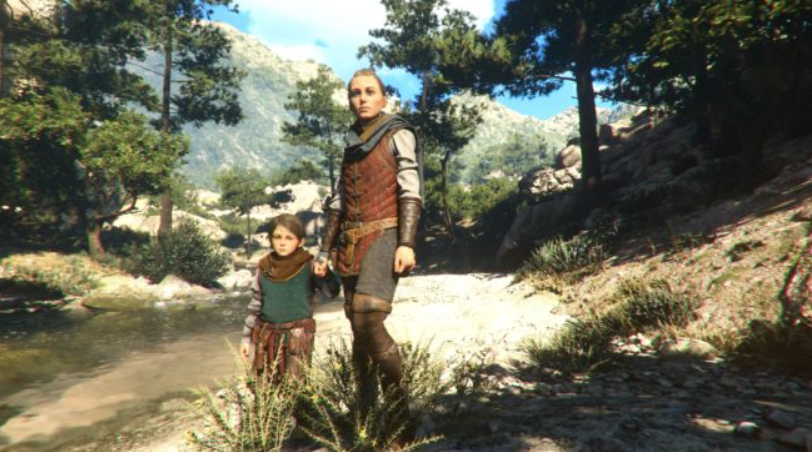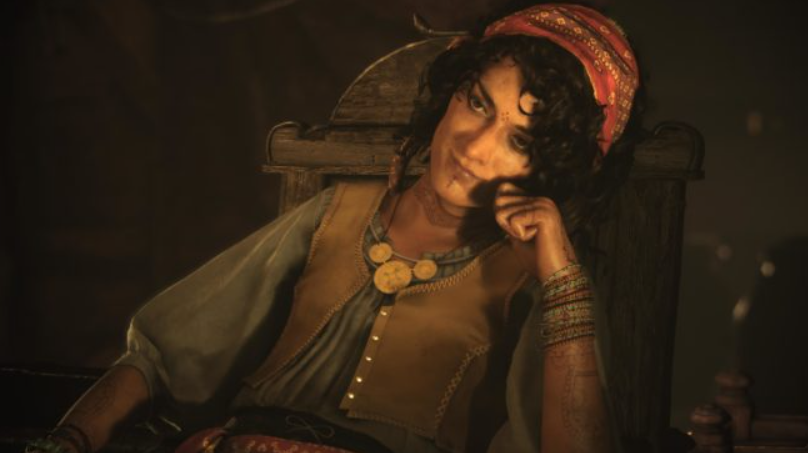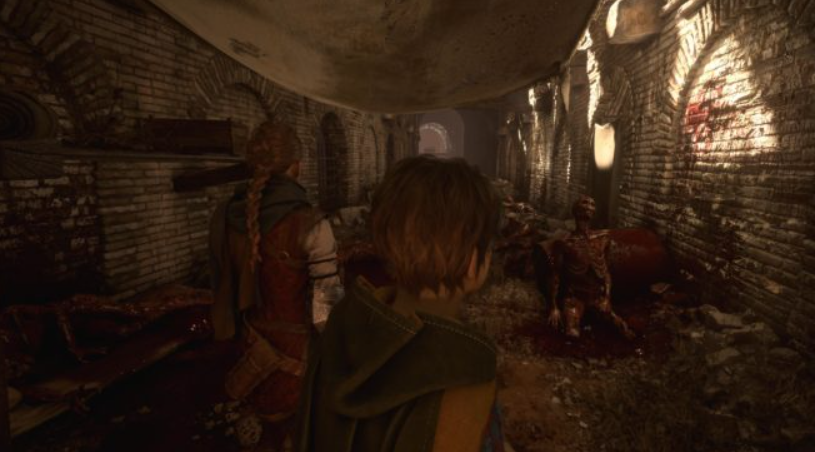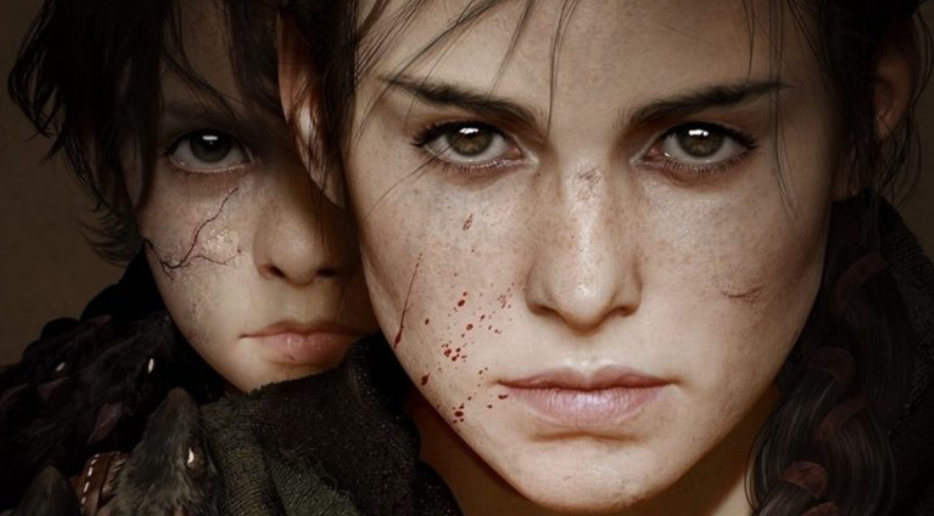It turns out that Asobo Studio did not plan for A Plague Tale: Requiem, creating A Plague Tale: Innocence as a finished work. Only the commercial success of the original game and the positive feedback from gamers prompted the studio to start working on the sequel. That’s how we could have been left without a good adventure. Fortunately, everything turned out well, and the second part will be released tomorrow. Tell us about it in the review.
Although the finale of A Plague Tale: Innocence can be considered as not requiring a sequel, it still left a lot of questions, primarily concerning the illness of Hugo, the younger brother of the protagonist Amitia, and the future of the characters.
Well, the sequel is ready to satisfy your curiosity. The action of A Plague Tale: Requiem takes place six months after the finale of the first part. Amitia and Hugo, their mother, and the young alchemist Luca, whom they met in the previous adventure, wander the world while Prima Macula slowly devours the boy, causing hordes of plague rats to periodically burst to the surface, defiling all life.

In his dreams, the boy constantly sees some island where he thinks he can find a cure for the curse he is forced to carry within him. Not that Amitia believes him unconditionally, but she agrees to travel to the mythical place, grasping at straws in the hope of saving her brother.
On this journey, the heroes will meet new friends and, of course, enemies. A Plague Tale: Requiem doesn’t leave Amicia alone, constantly tossing her companions along, even when Hugo isn’t on the adventure for whatever reason.
This was also the case in the first part, but now the allies feel better developed and more interesting. Lucas, for example, has visibly grown and become more judicious. The knight Arno, who agreed to accompany the heroes to the island, seems benevolent, but pursues only his known goals. The pirate Sophia, on the contrary, gives the impression of a rude girl, although she later reveals a completely different side.

Not everything is clear-cut with the villains, either. There are one-dimensional villains, as well as quite complex figures with clear motivations. In general, the game masterfully plays with the accents, is able to create the opposite mood atmosphere in the same location. This is often achieved through the most direct contrasts: for example, in the city, where Amitia and Hugo were resting during the day, walking through the market and watching the festival, by night begins a nightmarish rat invasion with large-scale destruction and gruesome deaths.
But sometimes the authors act more subtly: for example, one episode of Requiem recalls Ari Aster’s Solstice – the ominous calm of the sun-drenched town, the strange rituals and incomprehensible behavior of the locals inspire a sense of unease. However, the familiar episodes with mountains of bodies and other gruesome evidence of a deadly plague prevail here, we are more a body-horror than a psychological thriller.

Amitia and Hugo’s path lies through new territories, but their enemies are the old ones – soldiers and rats. The ways to counter them, in general, have not changed, although the list of available means has expanded. Familiar from Innocence slingshot and pot can be loaded with different “projectiles”: tar and fire to ignite the target, or on the contrary, a substance that extinguishes the flame – for example, if the enemy wandered into the area with rats, naively believing that the torch will protect him.
However, the slingshot only helps against lightly defended soldiers; it can’t penetrate armor. In this case the crossbow, a powerful weapon that allows you to kill the enemy with a single shot, comes to the rescue. We can’t consider it an ultimative weapon – there are very few bolts, and Amicia can’t craft them. Therefore, the crossbow remains a weapon of last resort.
In the sequel, the girl has grown and matured, and now she is more willing to engage in open combat with her enemies. The road behind becomes strewn with corpses, and the player invents more and more ways to eliminate the enemies: someone can be pushed into a fire or a rat’s hearth, someone should be shot in the forehead with a sling or in the chest with a crossbow, and someone will manage to pour tar on and set on fire. Interestingly, both Amitia and her companions reflect on the theme of murder and often point out that it could have been avoided.
Indeed, Requiem gives you a choice, allowing you to go through the locations in stealth. In the sequel, arenas are much more spacious, filled with shelters and objects with which to distract guards. In this respect, the game strongly resembles The Last of Us series with its large multi-level areas, lots of moves and shortcuts. Amitia, like Joel, can use a “disposable” knife to instantly kill an enemy, a sort of lifesaver in case a girl is cornered.
You can hide in tall grass and sneak along fences, throw rocks at metal chests and extinguish lamps to let the rats rush in where the enemies are. Even the companions are willing to help Amitia: Hugo directly controls the rodents, Sophia distracts the soldiers with a magnifying glass, and Arno rushes into battle with his sword and shield.
At the same time, stealth is not complicated. Patrolmen stubbornly do not notice the heroine, not to mention their partners, with whom scenes can occur here as in the aforementioned The Last of Us. I once had to watch, sitting in the grass, as Sophia running for cover collided with a guard: the characters hesitated for a few seconds, but eventually split up and went about their business.
Unlike the first part, the failure of the hidden location does not lead to the death of the heroine: Amity has every chance to run away and hide from the eyes of the enemies, and they will calm down after a while and stop searching. And even if the enemy catches the girl and knocks her down, she can get up, stun him and leave. And if you get to the exit point of the area, even the pursuing crowd of characters can’t do anything against the trigger: they will just slam the door in front of the enemies’ noses.
A Plague Tale: Requiem is a linear narrative game, and as such, a great deal here is tied to triggers. While in the relatively open locations there is little room for experimentation, in other episodes the developers do not allow you to get out of the way of their ideas: for example, the puzzles can only be solved the way the authors intended, and the alternative way you invented just won’t work.
You don’t have to hide from rats, but they don’t make them any less dangerous. As in Innocence, here the heroes are faced with a real sea of rodents: covering the ground as a living carpet, they devour everything that goes beyond the saving circle of light. There is an inconvenience with this, which stretches back to the first part: it is necessary to take an extra step, to touch even one rat – and Amitia sharply slows down and is very likely to become food for the creatures. Considering that the controls become more visceral when the girl travels with her brother, holding his hand, this often leads to accidental mistakes and is highly annoying.
The ways to avoid encounters with rodents remain the same – lights and fire. Amitia will shoot lit projectiles at torches and extinguished fires, spill tar and set it on fire, poke burning bolts into board walls, and push carts turned into makeshift torches. Resin can be thrown into a burning fire to briefly create a more powerful light source and scare the creatures away.
Sometimes in certain episodes there are too many rats and you just have to run away from them, choosing the right direction in a split second. These are purely scripted scenes, and here the aforementioned control flaws are particularly evident: several times during the chase I managed to fail to fit into a doorway or hesitate at a high threshold, and then had to go to the checkpoint.
Since Hugo is connected to the plague, he can directly control the rats, and now the boy is directly inhabited by the pack rather than directing it from a distance. Under his control, the swarming mass can penetrate wherever there is no light and kill guards in its path. In addition, Hugo is able to “scan” his surroundings, marking his enemies: he “senses” them thanks to his connection with the rats crawling under the ground.
As for Amitia’s abilities, the sequel has a mechanic of passive skills, which open depending on the chosen passing style. For example, if you prefer stealth, the girl will eventually become quieter and faster moving. And if you openly attack enemies, the heroine will get the skills that contribute to better stamina.
There is also familiar in the first part of the crafting and pumping equipment. Amitia is able to create projectiles on the fly, combining alchemical reagents that she finds during the journey. She also acquires tools and resources to improve her equipment: it allows, for example, to load a crossbow faster, modify the slingshot for a double shot, learn how to convert the reagents into resources, and so on.
Materials for crafting in abundance stacked in crates, which can be found almost at every step. For materials to improve your equipment you will have to hunt – carefully examine the locations, explore the branches, and periodically solve simple puzzles. Wandering into a secluded corner, you can also find collectibles and witness an optional scene – a small but pleasant reward for inquisitiveness.
Especially since the world of A Plague Tale: Requiem is fun to explore. The game combines corridor areas with large spacious locations, and one of the territories can be compared with Madagascar from Uncharted 4: A Thief’s End – here you can head in any direction, observe the locals and search for secrets. The charm of such a vast space can only be spoiled by the presence of invisible walls, in which the heroes are regularly confronted.
Finally, we want to mention the sound in the game, and first of all the voices of the characters. A Plague Tale: Innocence and A Plague Tale: Requiem should be played with French voice acting for better authenticity, and the actor who plays Hugo should definitely win an award at the upcoming The Game Awards – he is that good. The characters often talk in whispers, which creates an ASMR atmosphere in places, the ambient sounds create an authentic three-dimensional scene, and if you play with headphones, the immersion is one hundred percent.
If there were a recipe for creating the perfect sequel, it would say that the sequel should be larger, more varied, more dynamic. A Plague Tale: Requiem is exactly this kind of game: it simultaneously resembles the first part and at the same time gives the gamer a little more than the original did. The conclusion is unambiguous: if you liked Innocence, you will love Requiem too.

